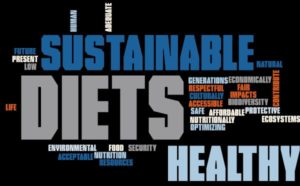“Don’t let the door hit you on your way out” may be one of the more appropriate phrases as we bid adieu to 2020. What a way to start a decade! In my January 2020 blog, I wrote, “What will happen in the next 10 years to feed the world? And restore consumers’ trust in their food? How will we define the 2020s? Will we enter 2030 with a 20/20 vision and have more balance to our food conversations? Futurists may have the answers but we, as consumers and producers, frame the conversation.” I’m not sure anyone foresaw the realities we’ve experienced this year. But if the pandemic-driven disruption of the food chain along with changing weather conditions, wildfires and a rise of food insecurity haven’t motivated us to recharge and reset our food priorities as we “rock in” to the New Year, I’m not sure what will. 2021 gives us the unique opportunity to build on our resilience and move forward.
Trends Forecast
Since October, retail chains to consumer research firms have highlighted foods that will populate our shopping lists as well as the priorities we, as consumers and farmers, will set in 2021. The sense of urgency to address planet and personal health remains high with the knowledge that staying in place is our “new normal.” Reinventing our kitchen experiences, focusing on foods for immune health, and recognizing the role we all play in our environment will monopolize our focus and attention as we roll up our sleeves and dive into the details. Let’s explore:
Comfort in the Kitchen with a Twist
The kitchen has always been a “happy” place for me since my childhood (even though my husband may not always agree). Baking bread or preparing batches of soup are not uncommon if I’m in “stress overload,” and it seems others would agree. According to Kroger’s trend analysis, the move to home baking as a mood booster and mental escape to help cope with added stress in 2020 will continue. Along with the baking, easy-to-prepare comfort foods are on the rise as we look to balance convenience and quick preparation times with international flair. According to 84.51°, Kroger’s data and analytics subsidiary, more than 60% of Kroger shoppers are spending more time cooking at home and the trend will continue in 2021.1 As noted in several trend forecasts, our desire to “spice up the basics” will grow simultaneously with our increased kitchen time as we experiment with global flavors and recipes to recreate our missed travel experiences or favorite restaurant meals.1 Personally, I can relate as Milk Street has been my new “go to” for trying new flavors and ingredients.
Food with a Purpose
Food has always provided us health benefits (or risks) depending on what we eat. But, for some of us, it’s taken a pandemic to drive home that message. Our zeal for seeking foods with functional benefits beyond the basic protein, carbs and fats are reaching new heights as we navigate this public health crisis. The naturally-occurring benefits of fruits, vegetables and nuts like berries, tree nuts and mushrooms will grace our plates along with new foods that support immune health, gut and brain health, energy levels and stress management. My advice: stick with the basics for the best “ROI” purchases.
Planet Health Drives Food System Change

ADM’s 2021 trend list2 highlights sustainability as “taking center stage” due to the heightened awareness among consumers. Regardless of where we are on the food value chain, recognition of the connection between planet and personal health is increasing. According to the Kroger insights,1 over two-thirds (65%) of consumers want to have a positive impact on the environment through their everyday actions. This growing awareness will continue to place increased demand on food companies to demonstrate their sustainability commitment beyond the finished product. The need for responsible sourcing and operating standards will require the agricultural sector to align and partner as transparency and trust drives the ultimate consumer satisfaction.

Resilience and Hope
As we “rock into 2021” let’s focus on the opportunities to find the “light at the end of the tunnel.” As our food system adapts to meet our consumer needs locally and globally, we have a role to play. If we, as consumers, are serious about improving the health of our society and the planet, we need to reset our priorities. How can we address food insecurity, food waste, food production and healthful eating at our community and state level? Trends are more than a list, they can transform. We have a responsibly to be part of the solution. So, recharge and reset … we are ready for 2021!
References
1. “Kroger Shares Top 10 Trending Foods of 2020,” The Kroger Co., December 17, 2020.
2. “ADM releases top five global food trends in 2021,” Feedstuffs, October 27, 2020.
3. “2021 agriculture industry predictions from Farmers Edge,” AGDAILY, December 16, 2020.

